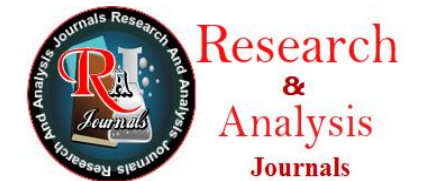The Impact of Knowledge Sharing on the Innovation Capacity of Students at Universities: The Mediating Role of Knowledge Acquisition and Knowledge Autonomy
Downloads
In the face of intensifying globalization and competition, innovative capability has emerged as a crucial metric for evaluating societal competitiveness and adaptability to contemporary challenges. This study seeks to investigate the influence of knowledge sharing on the creative potential of university students in Vietnam. Employing quantitative research methodologies via structural equation modeling (SEM) analysis. The study administered a survey involving 568 university students. The research findings indicate significant contributions by illustrating the direct and positive influence of knowledge sharing on innovation capacity, alongside the mediating roles of knowledge acquisition and knowledge autonomy in the relationship between knowledge sharing and students' innovation capacity. The authors recommend several ways to enhance the creativity potential of university students in Vietnam, based on the research findings.
Bandura, A. (1997). Self-efficacy: The exercise of control, New York: Freeman.
Cameron, A., Pham, T. H., Atherton, J., Nguyen, D. H., Nguyen, T. P., Tran, S. T., Nguyen, T. N., Trinh, H. Y., & Hajkowicz, S. (2019). Vietnam’s future digital economy - Towards 2030 and 2045, CSIRO, Brisbane.
Chennamaneni, A. (2006). Determinants of knowledge sharing behaviors: Developing and testing an integrated theoretical model, Doctoral dissertation, The University of Texas at Arlington.
De Vries, R., Hooff, B., & De Ridder, J. (2006). Explaining Knowledge Sharing: The Role of Team Communication Styles, Job Satisfaction, and Performance Beliefs. Communication Research, 33, 115-135.
Donate, M. J., & Guadamillas, F. (2011). Organizational factors to support knowledge management and innovation. Journal of Knowledge Management, 15(6), 890-914.
Drucker, P. (1985). Innovation and Entrepreneurship: Practices and Principles, Harper & Row, New York.
Escriba-Esteve, A., & Montoro-Sanchez, A. (2012). Guest editorial: Creativity and innovation in the firm: Managerial antecedents and effects on employees. International Journal of Manpower, 33(4), 344-348.
Hair, J. F., Black, W. C., Babin, B. J., & Anderson, R. E. (2010). Multivariate Data Analysis, 7th Edition, Pearson, New York.
Hansen, M. T., & Haas, M. R. (2001). Competing for Attention in Knowledge Markets: Electronic Document Dissemination in a Management Consulting Company. Administrative Science Quarterly, 46(1), 1-28.
Jer Yuen, T., & Majid, S. (2007). Knowledge-sharing patterns of undergraduate students in Singapore. Library Review, 56(6), 485-494.
Lin, H. F. (2007). Knowledge Sharing and Firm Innovation Capability: An Empirical Study. International Journal of Manpower, 28, 315-332.
Majid, S., & Chitra, P. K. (2013). Role of knowledge sharing in the learning process. Literacy Information and Computer Education Journal, 2(1), 1201-1207.
Nahapiet, J., & Ghoshal, S. (1998). Social Capital, Intellectual Capital and the Organizational Advantage, Academy of Management. The Academy of Management Review, 3, 242- 266.
Nonaka, I. (1994). A Dynamic Theory of Organizational Knowledge Creation. Organization Science, 5, 14-37.
Nunnally, J. C., & Bernstein, I. H. (1994). The Assessment of Reliability. Psychometric Theory, 3, 248-292.
Obeidat, Y. B., Al-Suradi, M. M., Masadeh, R., & Tarhini, A. (2016). The Impact of Knowledge Management on Innovation: An Empirical Study on Jordanian Consultancy Firms. Management Research Review, 39(10), 1214-1238.
Ong, E. Y. L., Ang, R. P., Ho, J. C. M., Lim, J. C. Y., Goh, D. H., Lee, C. S. & Chua, A. Y. K. (2011). Narcissism, Extraversion and Adolescents’ Self-Presentation on Facebook. Personality and Individual Differences, 50, 180-185.
Osterloh, M., & Frey, B. S. (2000). Motivation, knowledge transfer, and organizational forms. Organization Science, 11(5), 538–550.
Ovbiagbonhia, A. R., Kolloffel, B., & Brok, P. D. (2019). Educating for innovation: students’ perceptions of the learning environment and of their own innovation competence. Learning Environments Research, 22(1), 387–407.
Segars, A., & Grover, V. (1993). Re-Examining Perceived Ease of Use and Usefulness: A Confirmatory Factor Analysis. MIS Quarterly, 17, 517-525.
Stoll, L., Bolam, R., McMahon, A., Wallace, M., & Thomas, S. (2006). Professional Learning Communities: A Review of the Literature. Journal of Educational Change, 7, 221-258.
Taylor, S., Sharland, A., Cronin, J., & Bullard, W. (1993). Recreational Service Quality in the International Setting. International Journal of Service Industry Management, 4, 68-86.
Tran, Q. B., Nguyen, T. T. C., Ho, D. A., & Duong, D. A. (2021). The Impact of Corporate Social Responsibility on Employee Management: A Case Study in Vietnam. The Journal of Asian Finance, Economics and Business, 8(4), 1033-1045.
Van Den Hooff, B., & De Ridder, J. A. (2004). Knowledge Sharing in Context: The Influence of Organizational Commitment, Communication Climate and CMC Use on Knowledge Sharing. Journal of Knowledge Management, 8, 117-130.
Wabwezi, A. (2011). The role of knowledge sharing in fostering innovation in higher education: Acase study of Tallinn University, Halden: Hogskolen i Ostfold.
Wang, S., & Noe, R. A. (2010). Knowledge Sharing: A Review and Directions for Future Research. Human Resource Management Review, 20, 115-131.


